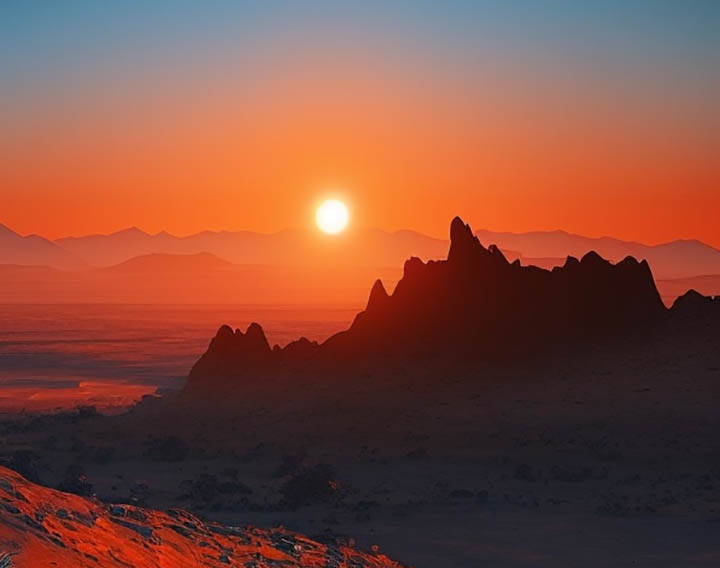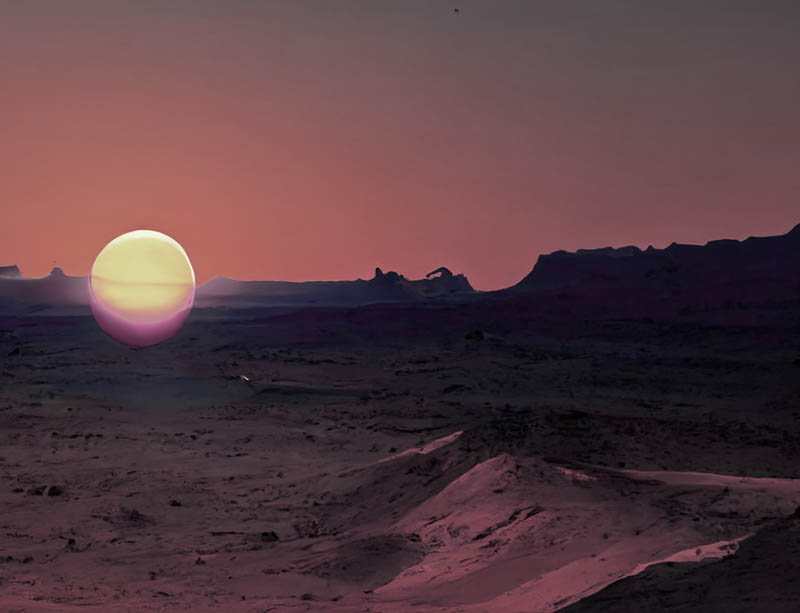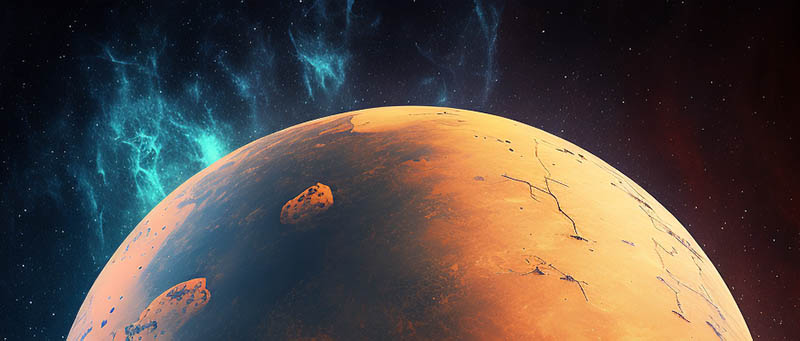Mars, the fourth planet from the Sun, is known for its reddish appearance in the night sky. However, one of the most captivating features of Mars is its unusual sky color when Sun goes down. Luckily, modern science has found out why Mars has blue sunsets.
Atmospheric Composition
The atmosphere of Mars is mostly carbon dioxide, with small amounts of nitrogen and argon. However, the atmosphere also contains tiny particles called dust, which can scatter light. The dust particles are relatively large and can scatter longer wavelengths of light, such as red and orange, while allowing shorter wavelengths, such as blue, to pass through.
Blue Sunset on Mars
During sunset on Mars, the Sun appears much smaller than it does on Earth. This is because Mars is further from the Sun than Earth and has a much thinner atmosphere. The Sun’s light passes through more atmosphere on Earth, making it appear larger in the sky.

As the Sun sets on Mars, its light passes through more and more of the planet’s atmosphere, scattering the shorter blue wavelengths of light. This creates a blue glow in the sky, which becomes more prominent as the Sun gets lower on the horizon. In addition to the blue glow, the sky can also appear pink and purple.
Conclusion
In conclusion, the blue sunsets on Mars are due to the scattering of shorter wavelengths of light by dust particles in the planet’s atmosphere. The thin atmosphere of Mars and its distance from the Sun also contribute to the appearance of the sunset. Understanding the atmospheric conditions and how they affect the appearance of Mars is crucial for future exploration and potential colonization of the planet.


